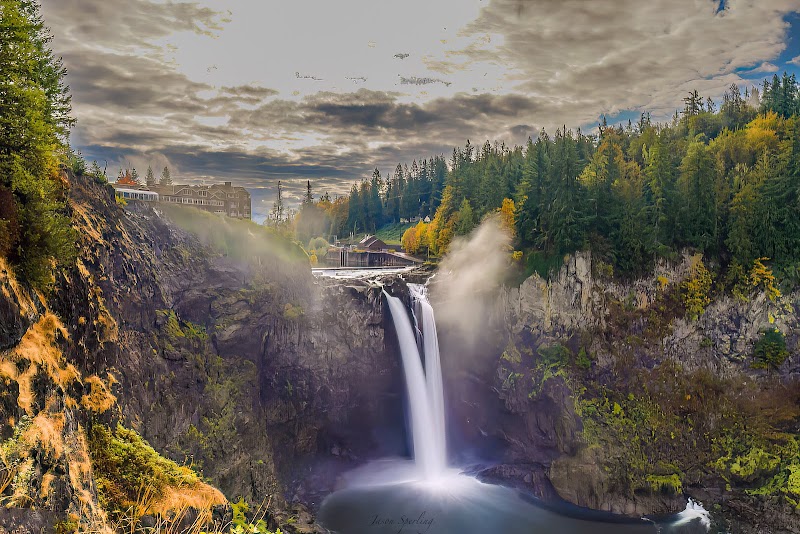
Wildlife Near Seattle: Exploring Nature’s Untamed Side
Experience Seattle’s rich wildlife just minutes from the city. Spot bald eagles, river otters, and harbor seals while exploring diverse habitats that range from coastal waters to towering old-growth forests. Ready your gear and embark on an accessible outdoor adventure packed with natural beauty and captivating animal encounters.
Use Binoculars for Better Wildlife Viewing
Bring a comfortable pair of binoculars to catch glimpses of birds and distant mammals without disturbing them.
Wear Waterproof Footwear
Many Seattle-area trails are damp or muddy, especially around wetlands. Proper footwear ensures traction and comfort.
Start Early or Late for Best Wildlife Activity
Animals tend to be more active during dawn and dusk. Timing hikes around these windows increases your chances of sightings.
Maintain a Respectful Distance
Keep a safe space between you and wildlife to avoid stress on animals and protect your safety.
Wildlife Near Seattle: Exploring Nature’s Untamed Side
Seattle’s proximity to lush forests, shimmering waterways, and rugged coastlines offers more than just cityscapes—it’s a gateway to wildlife adventures waiting to unfold. From bald eagles soaring above Lake Washington to the cautious glimmers of black-tailed deer in nearby woodlands, the region bursts with life that invites exploration. Whether traversing the moss-carpeted trails of Discovery Park or watching harbor seals along Puget Sound, wildlife encounters near Seattle combine accessibility with the thrill of the wild.
This Pacific Northwest hub is prime for spotting native species like river otters darting through creeks or great blue herons standing sentinel at the water’s edge. The Evergreen State’s temperate climate supports diverse habitats, making birdwatching and nature walks rewarding year-round. For outdoor enthusiasts, key keywords to guide exploration include “Seattle wildlife,” “birdwatching near Seattle,” “hiking trails with wildlife,” and “marine animals Puget Sound.”
Expect dense evergreen forests where Douglas firs and Western red cedars provide cover not only for elk and coyotes but also the elusive raccoon and fox. Alongside that, the region’s wetlands and estuaries create prime spots for amphibians and migratory birds.
Practical tips enhance your adventure: bring waterproof gear to handle damp forest floors, carry binoculars for spotting distant nests, and plan visits during early mornings or late afternoons when animals are most active. Respectful observation keeps wildlife wild—stay on trails, maintain distance, and pack out all waste.
Nearby trips and excursions amplify this connection with nature. Guided tours along the Snoqualmie River reveal salmon runs, while kayaking Puget Sound offers up-close views of seals and occasionally orcas. These experiences, combined with Seattle’s vibrant natural scenery, deliver an adventure tempered by practical knowledge and respect for landscapes fiercely alive with creaturely activity.
Nearby Trips
All Adventures
Boat Charters
Water Activities
Adventures near Seattle, Washington
Discover the unique and memorable adventures that make Seattle, Washington special.
Frequently Asked Questions
What are the best spots near Seattle for wildlife viewing?
Discovery Park offers wooded trails and shoreline views with frequent bald eagle sightings, while the Seward Park loop circles an old-growth forest rich with deer and bird species. Puget Sound kayak tours provide marine wildlife views including harbor seals and occasional orcas.
Are there guided wildlife tours available near Seattle?
Yes, several companies operate guided hikes and kayak excursions focusing on local wildlife. They enhance the experience with expert knowledge, spotting skills, and ensure safe, responsible interactions with animals.
What wildlife species are most common near Seattle?
Expect to see black-tailed deer, river otters, great blue herons, bald eagles, raccoons, and a variety of songbirds. Along the coast, harbor seals and seasonal orca pods may appear in Puget Sound.
Are there any safety considerations for wildlife encounters?
Keep a respectful distance, never feed animals, and be aware of your surroundings to avoid surprising larger mammals like coyotes or elk. Carry bear spray if venturing deeper into forested areas, although bear encounters around Seattle proper are rare.
When is the best time to see salmon runs nearby?
Salmon runs typically occur in fall, especially from late September through November, best observed at places like the Snoqualmie River and Sammamish River corridor.
What environmental practices should I follow outdoors near Seattle?
Stick to marked trails, pack out all trash, avoid disturbing nests or dens, and use biodegradable products. These practices protect diverse habitats and ensure wildlife thrive for future visitors.
Recommended Gear
Binoculars
Essential to observe distant wildlife without disrupting natural behavior.
Waterproof Hiking Boots
Keeps feet dry and stable on damp, muddy trails common near Seattle.
Layered Clothing
Allows adjustment for variable temperatures and wet conditions throughout the hike.
Water Bottle or Hydration Pack
Staying hydrated is critical during warmer months when exertion increases.
Local Insights
Hidden Gems
- "The tide pools at Lowman Beach revealing small marine creatures during low tide."
- "The Black River Riparian Forest within the city limits hosting owls and woodpeckers."
- "Secret viewpoints at Twin Falls along Snoqualmie River, framed by steep cliffs."
Wildlife
- "Juvenile bald eagles that spend months near forested wetlands learning to fly."
- "River otters that use both fresh and saltwater environments around the city."
- "Rare sightings of bobcats in the Issaquah Alps during quiet early mornings."
History
"Seattle’s connection to indigenous peoples shaped the management of its forests and waterways. Many local wildlife areas overlap with traditional tribal fishing and hunting grounds, now protected through cooperative stewardship."